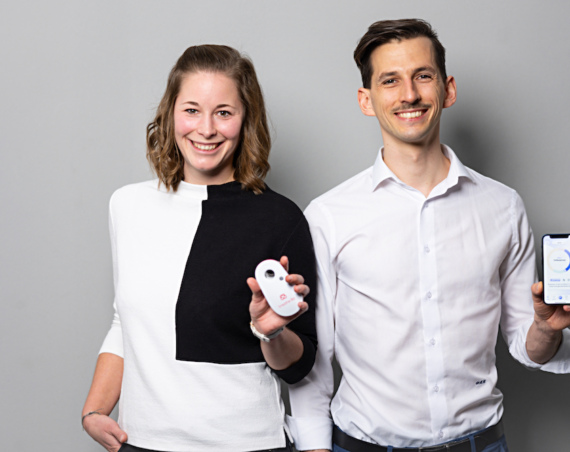The following guest post was written by Cecile Brosset, Co-founder & CEO of Sonio. Established in 2020 to enhance women and children’s health globally through medical advancements, Sonio has developed IT solutions and AI assistant features for obstetrics and gynecology ultrasound that assist medical professionals in the evaluation and documentation of ultrasound exams. Sonio was acquired by Samsung Medison in 2024.

The landscape of ultrasound technology is rapidly evolving, driven by significant advancements in both software and hardware. These developments are reshaping how prenatal care is delivered, creating new possibilities for healthcare providers and improved outcomes for patients.
Advances in Device Miniaturization and Portability
Recent years have seen remarkable progress in making ultrasound devices more compact, lightweight, and portable. Manufacturers are developing sophisticated handheld devices that deliver diagnostic-quality imaging while maintaining extended battery life and enhanced mobility for various clinical settings.
These portable ultrasound devices offer significant benefits for modern healthcare delivery. Their compact design enables clinicians to perform imaging procedures with greater flexibility, providing immediate diagnostic answers regardless of location. This portability is particularly valuable in remote or underserved areas where access to traditional ultrasound equipment may be limited.
From an economic perspective, handheld devices represent a more accessible investment compared to conventional ultrasound machines. This cost reduction expands the availability of ultrasound technology to smaller practices, community health centers, and mobile health initiatives, ultimately improving patient care accessibility.
Wireless Technology Integration for Enhanced Data Transmission
The integration of wireless technologies has significantly improved ultrasound reporting capabilities. Healthcare providers can now access and share ultrasound images along with patient information in real time, enabling seamless collaboration regardless of geographic location.
This wireless connectivity facilitates telemedicine applications and remote monitoring, which are particularly beneficial in areas with limited access to specialized prenatal care. A healthcare provider in a rural setting can perform an ultrasound examination and immediately share the results with specialists in urban centers, ensuring that complex cases receive expert review without requiring patient travel.
These technological capabilities also support improved continuity of care, as patient images and data can be easily shared between different healthcare providers and facilities, creating a more integrated approach to prenatal monitoring.
AI Integration for Enhanced Diagnostic Accuracy
Artificial Intelligence is transforming ultrasound reporting software by enhancing image quality, improving diagnostic accuracy, and streamlining workflow efficiency. In prenatal ultrasound applications, AI algorithms assist healthcare practitioners in monitoring pregnancy progression and identifying cases that may require specialized care.
Current AI capabilities include automatic detection of anatomical views and structures, as well as real-time verification of image quality criteria. This technology ensures that captured images meet diagnostic standards while identifying potential technical issues such as resolution deficiencies or positioning problems before they impact clinical assessment.
These automated quality control features allow healthcare professionals to focus their expertise on image interpretation and clinical decision-making rather than technical optimization. AI algorithms also play an important role in accelerating the diagnostic process while maintaining consistent quality standards across different operators and clinical settings.
Looking forward, we anticipate that AI will advance to detect anomalies directly within ultrasound scans, further enhancing diagnostic capabilities and enabling earlier intervention when necessary. These developments have the potential to significantly improve prenatal care outcomes by facilitating more timely and accurate diagnoses.
The Future of Prenatal Care Technology
The integration of miniaturized hardware, wireless connectivity, and artificial intelligence is creating new opportunities to improve both the accessibility and quality of prenatal care. These technological advances are making sophisticated diagnostic capabilities available in settings where they were previously impractical or impossible to implement.
As these technologies continue to mature, we can expect to see further improvements in diagnostic accuracy, workflow efficiency, and patient access to specialized care. The combination of portable devices, real-time data sharing, and AI-assisted analysis is establishing a foundation for more equitable and effective prenatal healthcare delivery.
The future of ultrasound reporting software holds significant promise for transforming maternal care. By staying at the forefront of these technological developments, the healthcare industry can work toward better outcomes for mothers and babies while making quality prenatal care more accessible across diverse healthcare settings and geographic locations.



